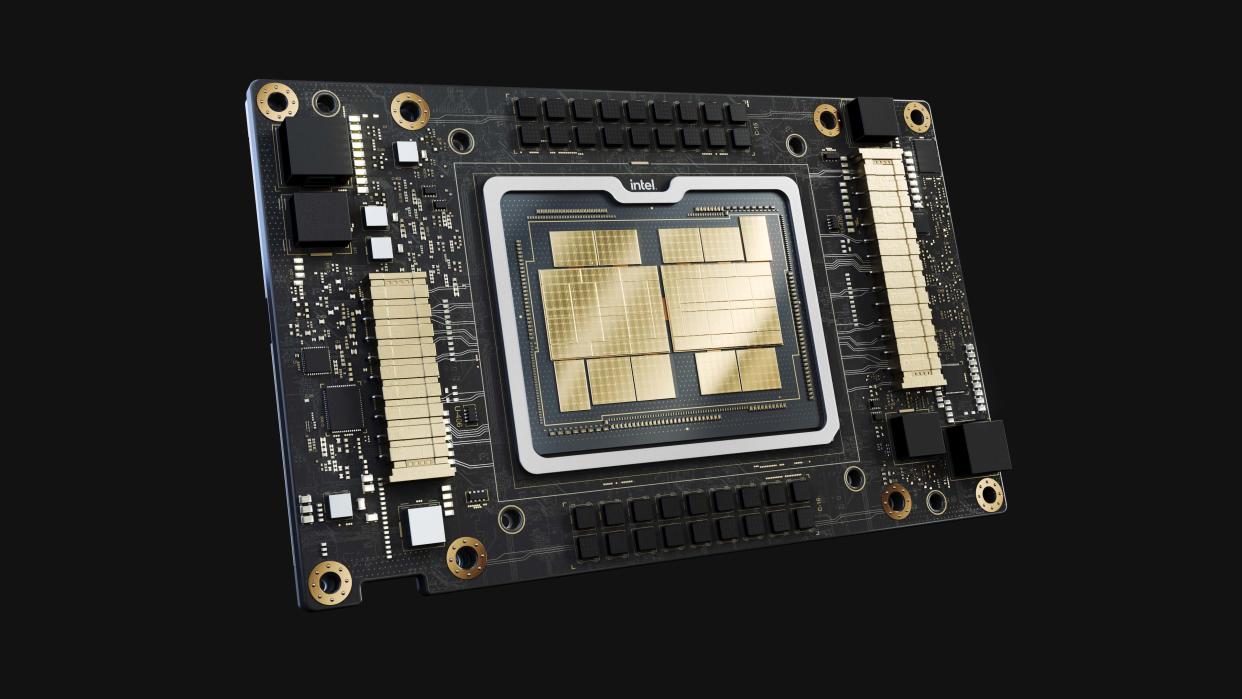Intel begins sunsetting Ponte Vecchio to focus on Falcon Shores, Gaudi 2 and 3

Intel has officially started the process of sunsetting its Ponte Vecchio HPC GPUs. According to ServeTheHome, Intel is starting to retire these GPUs just two years after initial release, as the company looks forward to launching Ponte Vecchio's successor Falcon Shores, as well as the Gaudi 2 and Gaudi 3 AI accelerators.
Intel isn't fully retiring Ponte Vecchio just yet, but it is no longer prioritizing Ponte Vecchio sales. To be more specific, Intel will still be producing Ponte Vecchio GPUs, but only for existing customers. This means that new customers will be out of luck if they want to buy Intel's latest (at the time of writing) GPU hardware and will be forced to look at alternatives from AMD and Nvidia.
Intel's decision to begin sunsetting Ponte Vecchio makes sense — the HPC and AI market is incredibly competitive right now, with the current AI boom. Intel Ponte Vecchio is now effectively a previous-generation architecture, thanks to AMD's introduction of the much newer MI300 and Nvidia's introduction of the B200 Blackwell. As a result, there's not much incentive for customers to buy Intel's inferior current GPU hardware when they can get newer, better hardware from competitors.
Ponte Vecchio originally launched in 2022 and it's the biggest GPU Intel has produced, so far. The architecture itself sports over 100 billion transistors, spread across 47 active tiles, and manufactured on five different process nodes. Depending on the configuration, one Ponte Vecchio GPU could have as many as eight compute tiles, or GPU dies, and four HBMe2 stacks based on Intel's Xe HPC architecture — which is even more potent compared to the vanilla Xe architecture Intel is using in its consumer Arc Alchemist GPUs.
It's also worth noting that the biggest showcase for Ponte Vecchio hasn't blown anyone away: The Aurora Supercomputer underperforms and uses more power than AMD's Frontier supercomputer. According to the latest Top500 numbers, Aurora takes the number two spot with 1,012 petaflops and 38,698 kW of power, compared to the older Frontier's 1,206 petaflops and 22,786 kW. There are workloads (mixed precision) where Aurora does better, but it was supposed to hit 2 exaflops (2,000 petaflops) — so it's short by half.
Despite its impressive size, Ponte Vecchio is now outdated compared to AMD's newer MI300 and Nvidia's new B200 APUs/GPUs. Intel, as usual, is already super late in delivering its MI300/B200 competitor in the form of Falcon Shores. This new architecture was supposed to debut in 2024 with a mixture of CPU and GPU cores to compete with AMD's MI300 APU (which also boasts CPU and GPU cores) and Nvidia's Grace Hopper Superchip, but Intel has been forced to delay Falcon Shores to 2025 and limit it to a GPU-only style chip.
Beginning the retirement process of Ponte Vecchio before Falcon Shores arrives will give Intel more resources to focus on Falcon Shores and accelerating its production after debut. This should help Intel catch up to AMD and Nvidia, but it will still be behind the development curve since AMD and Nvidia are also underway, building next-generation HPC hardware.

